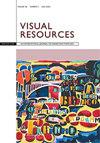Transatlantic Translations: Surrealist Modes of Advertising in France and the United States of America
IF 0.1
0 ART
引用次数: 0
Abstract
While Surrealism began as a European artistic movement with the power to defy bourgeois cultural norms, the movement's dissolution has frequently been blamed on commercialization. With its late 1930s arrival to the United States of America, the language of Surrealism was easily absorbed and reinvented as a vehicle to appeal to the unconscious consumerist desires of buyers. This article reconsiders the standard narrative of Surrealism's commerce-induced impotency through a comparison of advertisements in French and American fashion periodicals of the late 1920s. French advertisers during this time had little to no interest in American modes of psychologically infused advertising and moreover these advertisers saw the threat that Surrealism posed to the space of the magazine. When advertisements using Surrealist visual strategies did appear within French magazines, they acted not as empty signs of novelty but rather as vital disruptions that troubled the invisibility and naturalization of capitalist consumption.跨大西洋翻译:法国和美国广告的超现实主义模式
虽然超现实主义最初是一场欧洲艺术运动,具有反抗资产阶级文化规范的力量,但该运动的解体经常被归咎于商业化。随着20世纪30年代后期超现实主义的到来,它的语言很容易被吸收和改造,成为一种吸引买家无意识的消费主义欲望的工具。本文通过对20世纪20年代末法国和美国时尚期刊广告的比较,重新思考了超现实主义商业导致的无能的标准叙事。在此期间,法国广告商对美国的心理灌输广告模式几乎没有兴趣,而且这些广告商看到了超现实主义对杂志空间构成的威胁。当使用超现实主义视觉策略的广告出现在法国杂志上时,它们不是作为空洞的新奇标志,而是作为对资本主义消费的不可见性和自然化的重要干扰。
本文章由计算机程序翻译,如有差异,请以英文原文为准。
求助全文
约1分钟内获得全文
求助全文

 求助内容:
求助内容: 应助结果提醒方式:
应助结果提醒方式:


